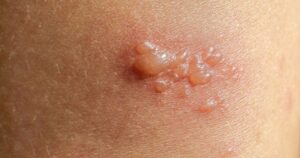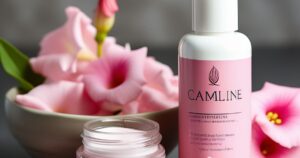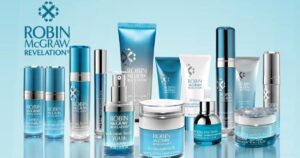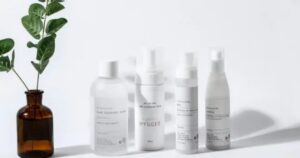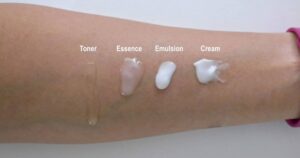While it may seem daunting to establish a skincare routine, taking proper care of your skin is essential for maintaining a healthy and radiant complexion. Some may argue that a skincare routine requires too much time and effort, but the benefits of diligent care far outweigh any perceived inconvenience. In this article, we will explore the steps involved in a professional skincare routine, providing you with the knowledge and confidence to embark on a journey towards healthier, more beautiful skin.
Key Takeaways
- Cleansing and toning are essential steps in a skincare routine as they remove impurities, balance the skin’s pH, and prepare it for better absorption of subsequent products.
- Serums, treatments, and eye creams address specific skin issues and help achieve a more radiant complexion while providing hydration and improving elasticity.
- Consistency is key when it comes to acne treatment to target the root causes, reduce inflammation, and unclog pores for clearer and healthier-looking skin.
- Moisturizers and face oils lock in moisture, nourish the skin, and help balance natural oils, promoting a brighter complexion and providing additional hydration.
Step 1: Cleansing
One of the most important steps in a skincare routine is cleansing, as it removes dirt and oil from the skin’s surface. Cleansing plays a vital role in maintaining healthy and radiant skin. By effectively removing impurities, it helps to prevent clogged pores, acne breakouts, and dullness. Moreover, cleansing prepares the skin to absorb the subsequent skincare products more effectively, maximizing their benefits.
To achieve optimal results, it is crucial to choose a cleanser that suits your skin type. Whether you have dry, oily, or sensitive skin, there are various cleansers available in the market tailored to address specific concerns. Additionally, cleansing should be done twice a day, in the morning and evening, to maintain a clean and refreshed complexion.
Step 2: Toning
Toning is an essential step in a skincare routine as it helps to balance the pH level of the skin and prepare it for the application of other products. After cleansing, toning is the next important step to maintain healthy and radiant skin. Toners are designed to remove any residual dirt or impurities that may have been missed during cleansing and help to tighten and refine the pores. They also restore the skin’s natural pH level, which can be disrupted by the alkaline nature of some cleansers. Additionally, toners provide a hydrating and refreshing boost to the skin, leaving it feeling revitalized and ready for the next steps in your skincare routine. Incorporating a toner into your daily regimen can help to improve the overall texture and appearance of your skin, giving you a smoother and more even complexion.
Step 3: Serum or Treatment
When it comes to achieving optimal results in your skincare routine, applying a serum or treatment after toning is a crucial step. Serums are lightweight, highly concentrated formulas that penetrate deeply into the skin, targeting specific concerns such as fine lines, hyperpigmentation, or acne. Treatments, on the other hand, are more intensive products that address specific skin issues like dark spots, dullness, or uneven texture. Both serums and treatments contain powerful ingredients that work together to enhance the overall health and appearance of your skin. By incorporating a serum or treatment into your routine, you can effectively address your unique skin concerns and achieve a more radiant complexion. Now, let’s move on to the next step: eye cream.
Step 4: Eye Cream
Applying eye cream is essential for targeting and addressing specific concerns around the delicate eye area. The skin around the eyes is thinner and more fragile, making it prone to signs of aging, puffiness, and dark circles. By incorporating eye cream into your skincare routine, you can nourish and protect this sensitive area. Here are three reasons why eye cream is a must-have:
- Hydration: Eye creams are formulated with hydrating ingredients like hyaluronic acid and ceramides, which help to moisturize and plump the skin, reducing the appearance of fine lines and wrinkles.
- Brightening: Many eye creams contain ingredients like vitamin C and niacinamide, which help to brighten and even out the skin tone, diminishing the look of dark circles and discoloration.
- Firming and tightening: Some eye creams contain peptides and antioxidants that work to improve the elasticity and firmness of the skin, reducing the appearance of puffiness and sagging.
Step 5: Acne Treatment
With the aim of combating breakouts and improving overall skin clarity, the next step in a skin care routine involves incorporating an effective acne treatment. Acne is a common skin condition that affects people of all ages and can have a significant impact on self-esteem and confidence. By including an acne treatment in your skincare routine, you can target the root causes of acne and prevent future breakouts. There are various options available, such as topical creams, gels, or serums that contain ingredients like benzoyl peroxide or salicylic acid, known for their ability to unclog pores and reduce inflammation. It is important to choose an acne treatment that suits your skin type and concerns, and consistency is key for optimal results. Incorporating an acne treatment in your skincare routine can help you achieve clearer, healthier-looking skin, boosting your sense of belonging and confidence.
Step 6: Moisturizer
A vital step in a skin care routine is to incorporate a suitable moisturizer that replenishes and hydrates the skin. Moisturizers help to lock in moisture and create a protective barrier for the skin, preventing dryness and maintaining a healthy complexion. Here are three key benefits of using a moisturizer:
- Hydration: Moisturizers contain ingredients such as hyaluronic acid, glycerin, and ceramides that attract and retain moisture, providing essential hydration to the skin. This helps to improve the skin’s elasticity and reduce the appearance of fine lines and wrinkles.
- Nourishment: Many moisturizers are enriched with vitamins, antioxidants, and botanical extracts that nourish the skin, promoting a brighter and more youthful complexion. These ingredients also help to repair and protect the skin from environmental damage.
- Balance: Moisturizers help to balance the skin’s natural oils, preventing excessive dryness or oiliness. By maintaining the skin’s moisture levels, they can also help to regulate sebum production, reducing the risk of acne breakouts.
Incorporating a moisturizer into your daily skin care routine is essential for maintaining a healthy, hydrated, and radiant complexion.
Step 7: Face Oil
As the final step in a comprehensive skin care routine, face oil can provide additional nourishment and hydration to the skin. Face oils are formulated with a blend of natural oils, such as argan oil, jojoba oil, or rosehip oil, that are rich in vitamins and antioxidants. These oils have the ability to deeply penetrate the skin, locking in moisture and creating a protective barrier against environmental stressors. Additionally, face oils can help balance the skin’s natural oil production, making them suitable for all skin types, including oily and acne-prone skin. By incorporating face oil into your daily routine, you can achieve a healthy, radiant complexion and enhance the effectiveness of your other skincare products. Remember to apply a few drops of face oil onto clean, dry skin and gently massage it in for optimal absorption.
Frequently Asked Questions
How Often Should I Exfoliate My Skin?
Exfoliating frequency depends on skin type. Generally, it is recommended to exfoliate 1-2 times per week for normal skin, while sensitive skin may require once every 2 weeks. Consult a dermatologist for personalized advice.
Can I Skip the Toning Step if I Have Dry Skin?
While toning is generally recommended for all skin types, individuals with dry skin may choose to skip this step if it causes excessive dryness or irritation. It is important to prioritize hydration and nourishment for dry skin.
What Are the Benefits of Using a Serum or Treatment in My Skincare Routine?
Using a serum or treatment in your skincare routine can provide numerous benefits. They can target specific skin concerns, such as fine lines or dark spots, and deliver potent ingredients that nourish and improve the overall health and appearance of your skin.
Is Eye Cream Necessary for Younger Individuals?
Eye cream can be beneficial for younger individuals as it helps moisturize and protect the delicate skin around the eyes, preventing early signs of aging. However, it is not a necessary step in a basic skincare routine.
Can I Use a Face Oil as a Moisturizer?
Using a face oil as a moisturizer can be suitable for some individuals, as it provides hydration and nourishment to the skin. However, it is important to consider individual skin type and preferences before incorporating it into a skincare routine.
Conclusion
In conclusion, following a proper skincare routine can greatly improve the health and appearance of the skin. By incorporating steps such as cleansing, toning, using serums or treatments, applying eye cream, treating acne, moisturizing, and using face oil, individuals can effectively address various skin concerns and maintain a healthy complexion. Adhering to this routine consistently can lead to noticeable improvements in skin texture, tone, and overall radiance.



